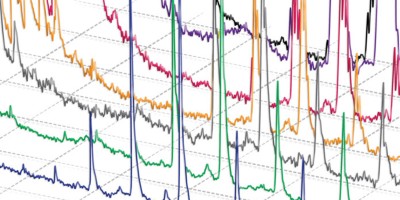
References
Orbán-Németh, Z. et al. Nat. Protoc. 13, 478–494 (2018).
van Zundert, G. C. P. et al. J. Mol. Biol. 428, 720–725 (2016).
Bonvin, A. M. J. J., Karaca, E., Kastritis, P. L. & Rodrigues, J. P. G. L. M. Nat. Protoc. https://dx.doi.org/10.1038/s41596-018-0017-6 (2018).
Karaca, E., Rodrigues, J. P. G. L. M., Graziadei, A., Bonvin, A. M. J. J. & Carlomagno, T. Nat. Methods 14, 897–902 (2017).
de Vries, S. J., van Dijk, M. & Bonvin, A. M. Nat. Protoc. 5, 883–897 (2010).
Rampler, E. et al. J. Proteome Res. 14, 5048–5062 (2015).
Kang, H.-A. et al. Nucleic Acids Res. 43, 3841–3856 (2015).
Pettersen, E. F. et al. J. Comput. Chem. 25, 1605–1612 (2004).
Herzog, F. et al. Science 337, 1348–1352 (2012).
Yılmaz, Ş. et al. Anal. Chem. 88, 9949–9957 (2016).
Song, J.-G. et al. Structure 23, 558–570 (2015).
Acknowledgements
Research was funded by the Austrian Science Fund (SFB F34: Z.O.-N., E.R., T.S.). We thank IMP and IMBA for general funding. Molecular graphics and analyses were performed with the UCSF Chimera package. Chimera is developed by the Resource for Biocomputing, Visualization and Informatics at the University of California, San Francisco (supported by NIGMS P41-GM103311). Images in Chimera were created using Persistence of Vision Raytracer (version 3.6), Persistence of Vision, Pty. Ltd. (2004), retrieved from http://www.povray.org/download/.
Author information
Authors and Affiliations
Corresponding author
Ethics declarations
Competing interests
The authors declare no competing interests.
Additional information
Publisher’s note: Springer Nature remains neutral with regard to jurisdictional claims in published maps and institutional affiliations.
Integrated supplementary information
Supplementary Figure 1 Crystal structure of the PPP2R1A–PPP2CA complex and selected best protein complex models obtained after the final HADDOCK docking step.
(a) Selected model after re-calculation using the correct distance restraints between residues. This model displayed the best HADDOCK score among the models satisfying all three cross-links and a high XL score. (b) Selected model after re-calculation using the correct distance restraints between specific atoms. This model displayed the best HADDOCK score and XL score. (c) Selected model as presented in our protocol, calculated using the erroneously short distance restraints. (d) Crystal structure of the PPP2R1A–PPP2CA complex: PDB entry 2IAE. (a-d) Cross-links are shown in green. PPP2R1A and PPP2CA are colored light and dark, respectively
Supplementary Figure 2 Crystal structure of the plectin-calmodulin complex and selected best protein complex models obtained after the final HADDOCK docking step.
(a) Selected model after re-calculation using the correct distance restraints between residues. This model displayed the best HADDOCK score and XL score. (b) Selected model after re-calculation using the correct distance restraints between specific atoms. This model displayed the best combination of HADDOCK score and XL score. (c) Selected model as presented in our protocol, calculated using the erroneously short distance restraints. (d) Crystal structure of the plectin-calmodulin complex: PDB ID 4Q57. (a-d) The calmodulin chain is colored red
Supplementary Figure 3 Inter-protein cross-links mapped onto the predicted best model of the plectin-calmodulin complex derived from re-calculation using the corrected distance restraints between residues for HADDOCK.
(a) Compatible and (b) incompatible cross-links are mapped onto the selected model and are colored green and orange, respectively. (a and b) The calmodulin chain is colored red, the plectin chain blue, calcium is shown as green spheres. E14 of calmodulin and R40 of plectin, the residues involved in formation of a salt bridge, are shown as sticks and are colored green and yellow, respectively
Supplementary Text and Figures
Rights and permissions
About this article
Cite this article
Orbán-Németh, Z., Beveridge, R., Hollenstein, D.M. et al. Reply to ‘Defining distance restraints in HADDOCK’. Nat Protoc 13, 1503–1505 (2018). https://doi.org/10.1038/s41596-018-0018-5
Published:
Issue Date:
DOI: https://doi.org/10.1038/s41596-018-0018-5
- Springer Nature Limited


